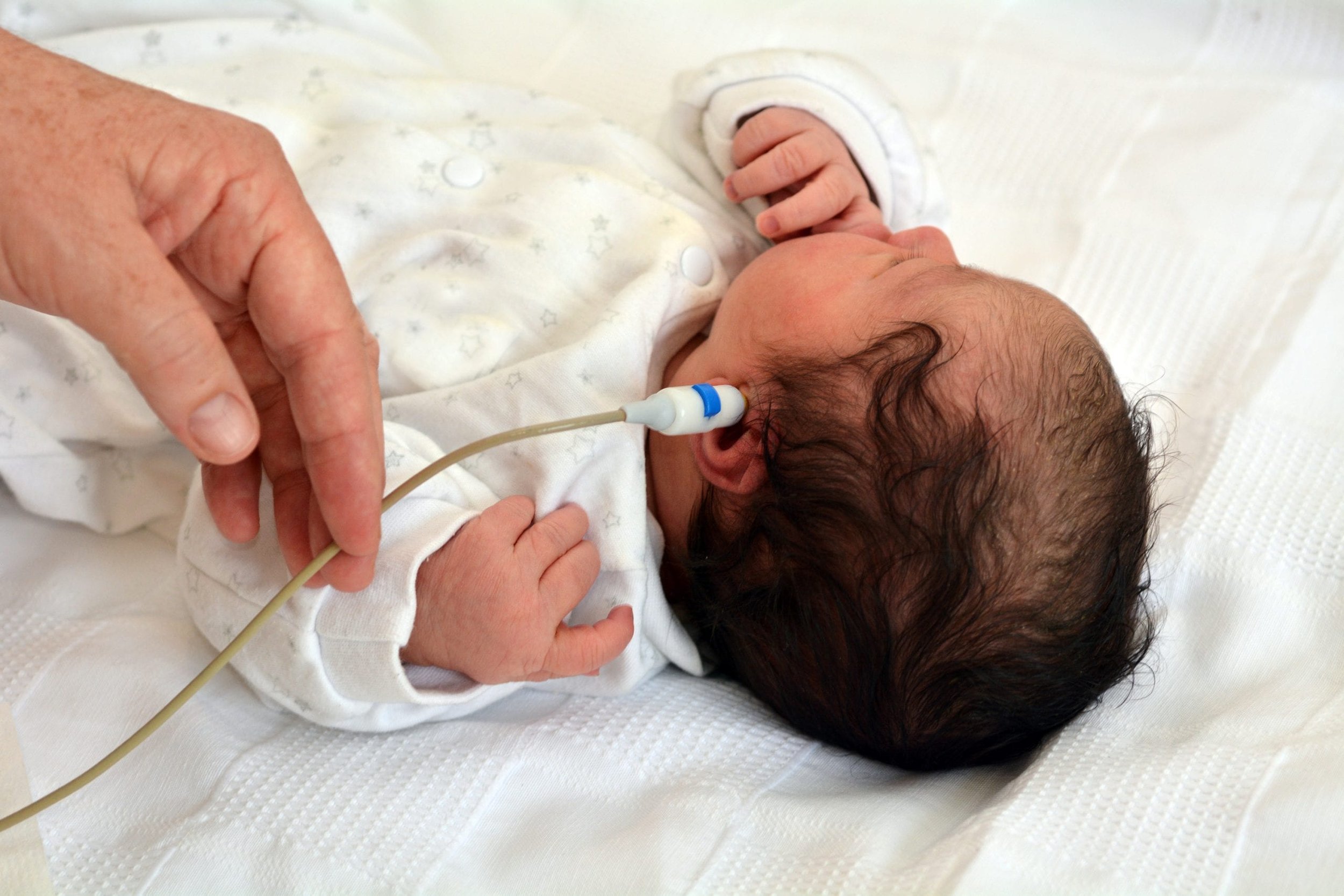What to Expect for Baby’s 24 Hour Screenings
After delivery, during the birth admission there are a multitude of tests, or screenings, done on baby to ensure they are medically stable for discharge. Some of these screenings vary depending on location, specifically they can differ state to state in the US. Screenings can be nerve-wracking for new parents as they often do not know what to expect and may be anxious about their baby “passing” these screenings. All of these screenings are designed to ensure a health problem is not missed in your baby. Some health problems do not show immediate signs or physical symptoms until damage is already done. Here is a quick run down of what to expect as your baby crosses the 24 hour of life mark.
Hearing screen: Required in nearly all 50 states during the hospital admission. Goal is to catch hearing loss as early as possible in children. A child’s ability to hear affects many things including speech development later in childhood. The process is painless and can occur anytime after your baby is 18 hours old. There are two different ways a hospital may test your baby’s hearing. Both methods are both done if baby is asleep and not crying, so we try to catch babies right after a feeding to have them done. Neither method is perfect and can be affected if baby is fussy. During the hospital admission, if the baby fails (may also be said to have referred) the hearing screen initially, it can be repeated in 8 hours. If an infant refers twice, a third attempt will happen about a week after discharge from the hospital.
Method 1: Automated auditory brainstem response, which is a lot of words to say we are testing their hearing nerve. Sticker sensors are placed on baby’s head to measure the baby’s response to clicking noises which come through headphones on the baby’s ears.
Method 2: Otoacoustic emissions, which is a fancy way to say they measure sound waves in the baby’s ear canal. A tiny sensor goes into the baby’s ear canal and then headphones are placed on the baby which make clicking sounds. The sensor measures the echo in the ear canal.
First Bath: The World Health Organization (WHO) recommends delaying the baby’s first bath by at least 24 hours. There are multiple reasons for this. First, babies have a hard time regulating their temperature after delivery, which makes sense. For the last 9 months of their lives, they lived in a body temperature room and suddenly, they are out in the world where most regulated indoor rooms stay in the 70’s. Temperature shifts can occur quickly. When a bath occurs, body temperature drops as they are naked and wet. Giving them time before the first bath helps their bodies to start regulating their temperature before outside factors are introduced. Also, babies are born with a thin white coating of something called vernix. Vernix is a protective film that develops late in pregnancy. Vernix has anti-microbial properties that help protect the baby’s skin from infection and also provides natural moisture to the skin to help transition from being in fluid all the time to being dry in the outside world.
Jaundice screening: Jaundice is something most babies deal with to some extent in the first week of life. Jaundice levels peak in their bodies about day 3-4 of life in a healthy, term infant. Unless increased risk factors are present, routine jaundice screens start at 24 hours of life. We will dive much deeper into jaundice, risk factors and causes in another post. Bilirubin collection in the blood causes jaundice in babies. Most hospitals have adopted a painless screening tool called a “transcutaneous bilirubin monitor” which shines a light on the baby’s head and estimates their bilirubin level. If the level is high, the recommendations are to obtain a blood level to confirm. Again, MUCH more to come on this topic later.
Critical Congenital Heart Defect (CCHD) screen: All 50 states now require this screening. It is a painless screening for baby which involves placing a sticker on your baby’s right foot and right hand simultaneously to measure their blood oxygen level. The number should be greater than 90% in both places and no more than 3 points away from each other. If an infant fails the initial screening, it will be repeated in 1 hours. If an infant fails three times, an ultrasound of the heart is recommended to ensure the baby’s heart is healthy and without defects.
Newborn blood screening: This is the screening that most differs based upon where your baby is born. Some chronic disorders can be serious and cause lasting damage in the body prior to a child ever showing symptoms, which is why it is recommended to obtain this screening early. This screening involves taking blood from your baby’s foot and placing small dots of blood on a piece of paper. This is the most uncomfortable of all the screenings as it does involve squeezing baby’s foot until the blood forms a suitable drop to place on the card. Each state in the US has deemed which disorders they will be screening for. The collection is sent to a state lab where results are processed. In NC, it takes about 7-10 days for the pediatrician to receive the final results. Common disorders screened for include metabolic issues like PKU (the body’s ability to process protein), hormone issues such as hypothyroidism, and blood disorders such as sickle cell disease. It also screens for rare disorders such as cystic fibrosis and spinal muscular atrophy. Early medical care for these disorders is crucial.


